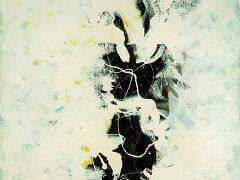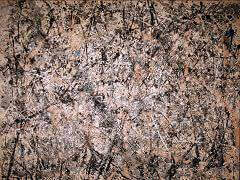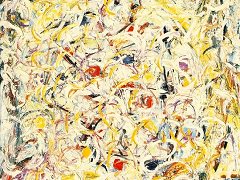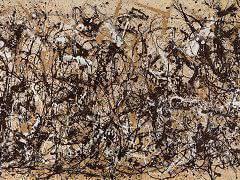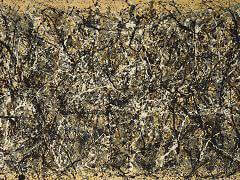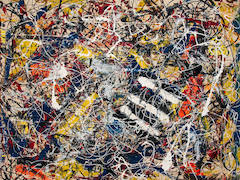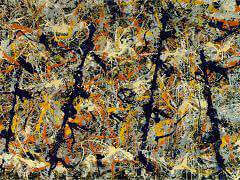Portrait and a Dream, 1953 by Jackson Pollock
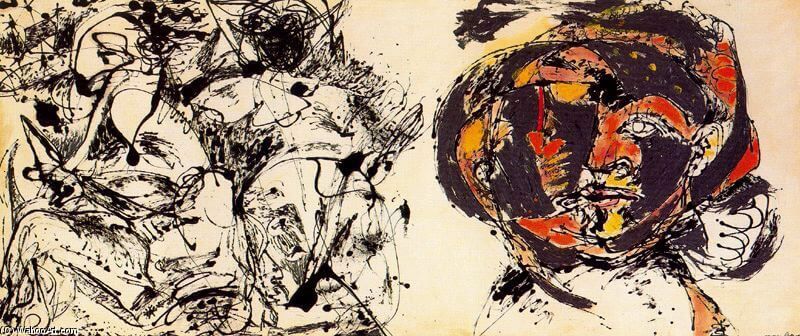
Pollock's magic as a painter is in his refusal to acknowledge a gulf between his painting and himself. He spoke of being "in my painting". His abstract art is not of the rational, ordering mind but of the entire self. This painting, too, is
brutally, hysterically a piece of him. The portrait is a clumsy, violent thing, drawn in spiraling, blotted black lines, with that one open jaded eye and a ridiculously ham-fisted shape propped on a body that is too small - proof that
Pollock was no Norman Rockwell, no homely illustrator.
The head is almost attacked with color: non-representational, ungainly but incongruously alive color. Transgressing the drawn border between the face and its surroundings, Pollock's jarringly pretty grafts of color communicate discomfort
and anguish, like the style of Vincent van Gogh.
Melodramatically, Pollock colors the portrait to contrast with the deathly black-and-white tangle of bodies and the unreadable astral forms on the left. He said part of this "dream" denoted "the dark side of the moon"; Krasner later wished
she could remember what else he had said about the painting in a moment of lucid confession. Even without its title, you would guess that it represents a head and its contents, a self and its inner life. In contrast to the total immersion of
his supreme abstract paintings, Pollock stands apart from his "inner life".
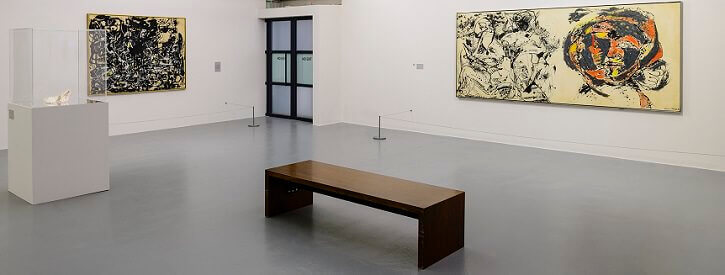
In his hour - when he had his hour - Pollock believed the mess inside him was somehow communicable and beautiful. Then, it was. Now, separate from this chaos of dreams, he contemplates its violence, menace, tangled psychosexual mayhem, as baffled as we are.
In 1943 the critic Clement Greenberg compared Pollock's palette to the gothic darkness of "Melville, Hawthorne, Poe". This, and other late works such as The Deep (1953), are literary in their American horror.



